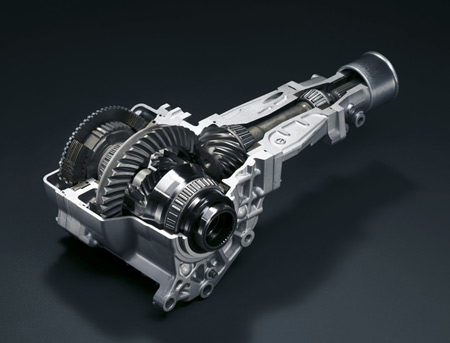WRC differentials
The differential is one of the most important components in a modern rally car, contributing significantly to its performance potential. This impact is in terms of actual grip and, more important, the feel the differential affords the driver in order to judge available grip, allowing them to extract maximum performance from a given set-up.
With the simplification of the technology allowed now in the WRC, teams are limited to using purely mechanical systems, but this was not always the case. Until 2006, active differentials were permitted, and it would be fair to say that they were some of the most advanced units ever to grace a racecar. Their use enabled a flexibility of set-up previously impossible with a mechanical diff, and more important they allowed every ounce of available grip to be exploited.
Active differentials are usually composed of a classic, free (that is, non-self-locking) device that holds what can best be described as a clutch. The clutch progressively operates the differential's locking and is commanded by an ECU and activated by hydraulic pumps or electric current.
At its most basic level an active differential can control the level of slip in the diff using information gathered from various sensors, but those found on WRC cars were far more complex than this. Through the use of front, rear and centre diffs, linked through a main ECU, the level of wheel slip could be controlled on each corner of the car, with torque being transferred both laterally and from front to rear.
Each differential would be mapped, much like an engine's ECU, and drivers would often have access to several different maps from a dashboard controller. The ECU would draw data from multiple sensors - typically those for throttle, rpm, speed, brake pedal, handbrake, switch position and so on - and interpolate the information onto a 3D map that then establishes the appropriate amount of differential lock for the particular driving circumstances.

Throughout a corner, drivers would be looking for the car to behave in a certain way, so the relationship between throttle position and the state of the diff was very important. For example, under braking, the diffs would initially lock fully, providing a very stable platform, but as steering angle was applied (still under braking) the locking had to be eased back to prevent understeer.
As the driver began to get back on the throttle, the state of the diffs would change again, with a balance having to be struck between the front, centre and rear settings. This would see the front diff locking considerably to help pull the driver into the apex, with the centre diff helping to keep the car's attitude neutral while the rear diff steadily increased its pressure to aid traction, but not so much as to produce oversteer.
Given the huge variety of surfaces experienced during a rally, this capability was evidently a great advantage, and unsurprisingly the development of differential maps was an ongoing process for engineers. Unfortunately such open-ended technical development cost money, and with the WRC looking to reduce spending in the sport the active diff became a casualty of new regulations in 2006.
Fig. 1 - A Mitsubishi active rear differential; note the clutch set-up on the left-hand side
Written by Lawrence Butcher